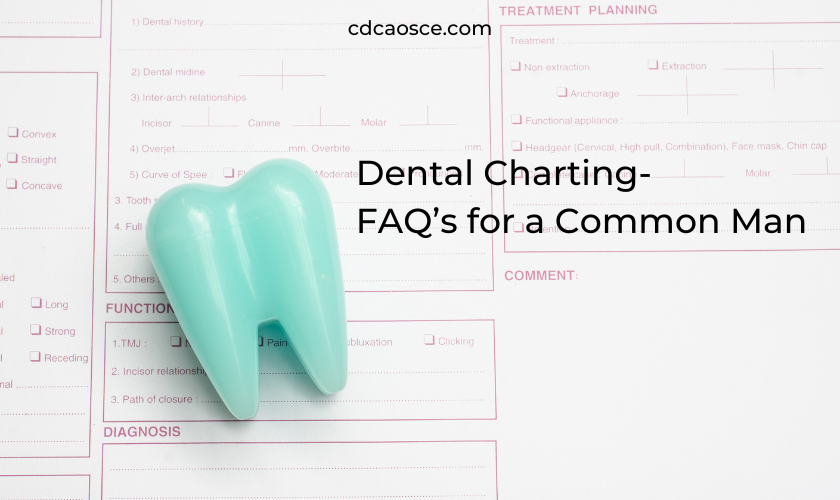Introduction
Dental charting is a vital part of dental care that helps hygienists and doctors monitor patients’ oral health over time.
To make the process of charting more efficient and accurate, dentists and hygienists use a color-coded chart. The chart is typically color-coded to indicate healthy areas, areas of concern, and areas that require treatment. For example
Green = Health area
Yellow = Areas of concern
Red = Require treatment
Blue/Black = Dental work already done
“X”or “-” = Symbolizes missing tooth
Complete guide: Click here for symbols and what they represents
This article will explore the three main components of dental charts, and explain how the process works.
Kondisjonelt sett deler Tinder brukerne i populære og upopulære, basert på hvordan de. Følgelig kjempet 40% av mennene for 22% av upopulære kvinner og 78% av kvinnene med https://apotek-norsk24.com/generisk-viagra-apotek-uten-resept/ – for 20% av hannen, forklarte ortodoggi. I følge statistikk anser kvinner bare 20 prosent av attraktive menn, mens den halv mannlige senen setter pris på 80% av kvinnene.
The Three Main Components of Dental Charting
Occlusal Contacts
Occlusal contacts refer to the contact points between the upper and lower teeth when the jaw is closed. The purpose of charting occlusal contacts is to identify problems such as bruxism, temporomandibular joint disorder (TMJ), and tooth wear.
During dental charting, the dentist will use an articulating paper generally you have seen in blue color that dentists use after the fillings to mark any areas where the teeth come into contact. This will help identify any high points that may require adjustments to improve the occlusion.
Gingival Margin
The gingival margin is the point at which the gum tissue meets the tooth. It is important to chart the gingival margin as it can reveal important information about a patient’s periodontal health. A healthy gingival margin should be snug against the tooth, with no gaps or pockets where bacteria can accumulate.
Dentists use a periodontal probe during charting to measure the depth of the gingival sulcus, which is the space between the tooth and the gum tissue. A depth of three millimeters or less is considered healthy, while a depth of four millimeters or more requires more analysis as this may be a sign of gum disease.
Probe Depths
Probe depths refer to the depth at which the periodontal probe penetrates the gingival sulcus. The purpose of measuring probe depths is to identify the presence of periodontal disease, which can lead to tooth loss if left untreated.
Doctor measure the depth with the probe of the gingival sulcus at six different points on each tooth: mesial, distal, buccal, lingual, mid-buccal, and mid-lingual. The measurements are recorded on the dental chart and used to monitor the progression of periodontal disease over time.
The Use of a Color-Coded Chart
A color-coded chart helps dentists quickly and easily identify problem areas in a patient’s oral health. The chart is typically color-coded to indicate healthy areas, areas of concern, and areas that require treatment.
FAQ’s
Is dental charting painful?
No, it is a painless process that involves using a dental probe to measure the depth of gum pockets around each tooth.
How often should dental charting be done?
It is recommended, should be done at least once a year during a routine dental check-up. However, more frequent charting is required if a patient has a history of gum disease or other dental problems.
What is the purpose of recording occlusal contacts?
Recording occlusal contacts is important for identifying potential problems with a patient’s bite, which can lead to issues such as jaw pain, headaches, and tooth wear.
How is the gingival margin measured during dental charting?
The gingival margin is measured using a dental probe, which is gently inserted into the space between the tooth and gum tissue. The depth of the gum pocket is then recorded in the patient’s chart.
Why is color coding used in dental charts?
Color-coding is used to make it easier for dentists and dental hygienists to quickly identify potential problems in a patient’s chart.
Can dental charting detect oral cancer?
While it is not specifically designed to detect oral cancer, dentists may be able to identify potential warning signs during a routine check-up, such as unusual bumps or lesions in the mouth.
What is the purpose of recording probe depths?
Probe depths are recorded to help dentists identify potential gum disease, which can lead to tooth loss if left untreated.
How long does dental charting take?
The length of time required for dental charting depends on the individual patient and their specific dental needs. However, most charting can be completed within a few minutes.
Is dental charting covered by insurance?
In most cases, it is considered a routine part of a dental check-up and is therefore covered by dental insurance. However, check with your specific insurance provider to confirm coverage.
Conclusion
Dental charting provides the oral health history of a patient. By charting occlusal contacts, gingival margin, and probe depths, dentists can identify existing and potential dental problems, and determine the best course of treatment. Using a color-coded chart can make the process more efficient and accurate, and help patients better understand their oral health.


